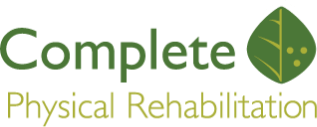Sciatica. In my experience in Physical Therapy, my patients in Jersey City and Elizabeth have definitely heard the term before, but there is a struggle to really define what it is. In order to clear up this confusion, I thought it would be a great idea to jump right in and define what sciatica is, plus go into common causes for the condition.
What Is Sciatica?
Sciatica is basically a common type of back pain that affects the sciatic nerve, which runs from the lower back down through the back of each leg. Here is an image showing the anatomy of the sciatic nerve:

Common symptoms of sciatica include low back pain, hip pain, and tingling, numbness, or weakness that travels down the leg. In general, sciatica only affects one side of the body, and because the pain goes down the leg, many patients mistakenly think that there must be problems with their leg as opposed to their back.
Although there can be many causes for sciatica, a good amount of sciatic pain can be traced back to three common underlying medical conditions:
Lumbar Herniated Disc
A herniated disc occurs when the soft inner material of the disc leaks out, or herniates, through the fibrous outer core and irritates or pinches the contiguous nerve root.
Other terms used to refer to a herniated disc are slipped disc, ruptured disc, bulging disc, protruding disc, or a pinched nerve. Sciatica is the most common symptom of a lumbar herniated disc.
Degenerative Disc Disease
While some level of disc degeneration is a natural process that occurs with aging, for some people one or more degenerated discs in the lower back can also irritate a nerve root and cause sciatica.
Degenerative disc disease is diagnosed when a weakened disc results in excessive micro-motion at that spinal level, and inflammatory proteins from inside the disc become exposed and irritate the nerve root(s) in the area.
Spinal Stenosis
This condition commonly causes sciatica due to a narrowing of the spinal canal. Lumbar spinal stenosis is related to natural aging in the spine and is relatively common in adults older than age 60.
The condition typically results from a combination of one or more of the following: enlarged facet joints, overgrowth of soft tissue, and a bulging disc placing pressure on the nerve roots, causing sciatica pain.
Lumbar spinal stenosis commonly occurs along with spinal arthritis, and arthritis can also cause or contribute to sciatica symptoms.
With a clear definition of Sciatica and knowing what can commonly cause the condition, we can move onto treatment options. In my next article, I’ll go into what the goals of any good Physical Therapy treatment program should be.

Dr. Asha Pumarada is a licensed Physical Therapist and co-owner of Complete Physical Rehabilitation. With over 20+ years of treatment experience, she is a McKenzie Certified back pain specialist, an LSVT BIG certified specialist for Parkinson’s disease, and is one of the most sought after vestibular therapy specialists in Elizabeth and Jersey City, they specializing in the treatment of all dizziness, vertigo, and imbalance issues along with her husband, Dr. James Pumarada.
